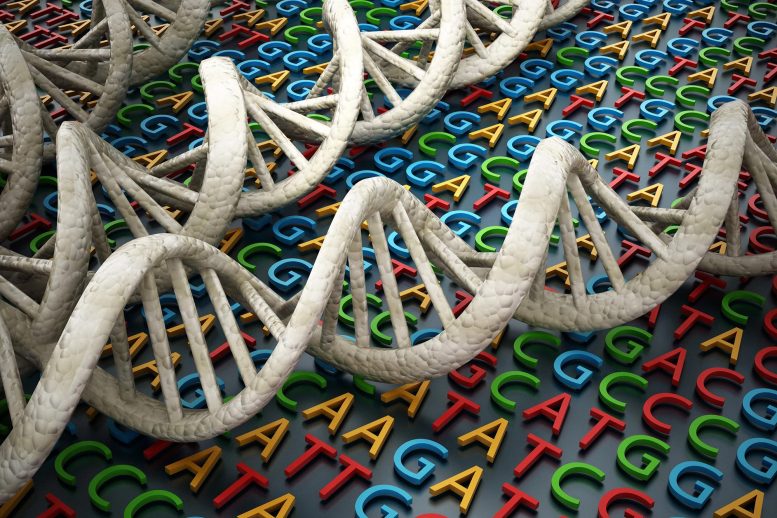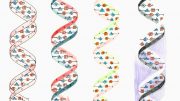
A significant international study examining the genomes of 240 mammals has revealed over three million key regulatory elements, advancing understanding of mammalian evolution, species-specific traits, disease predispositions, and risk of extinction. The findings, which could improve understanding and treatment of diseases like schizophrenia, asthma, and medulloblastoma, underscore that at least 10% of the genome is functional, far more than previously known.
Genomes From 240 Mammal Species Explain Human Disease Risks
Why is it that certain mammals have an exceptional sense of smell, some hibernate, and yet others, including humans, are predisposed to disease? A major international research project, jointly led by Uppsala University, Sweden, and the Broad Institute, USA, has surveyed and analyzed the genomes of 240 different mammals. The results, now published in 11 articles in the journal Science, show how the genomes of humans and other mammals have developed over the course of evolution. The research shows which regions have important functions in mammals, which genetic changes have led to specific characteristics in different species and which mutations can cause disease.
“In combination, the 11 articles we are now publishing in Science provide an enormous amount of information about the function and development of mammalian genomes,” says Kerstin Lindblad-Toh, Professor of Comparative Genomics at Uppsala University and one of two leaders of the international consortium of researchers. “Moreover, we have produced data that can be used for studies of evolution and medical research for many years to come.”
In a large international project jointly led by Uppsala University and the Broad Institute, more than 30 research teams have together surveyed and analyzed the genomes of 240 mammal species. The results, now published in 11 articles in the journal Science, show how the genomes of humans and other mammals have developed in the course of evolution.
The human genome contains approximately 20,000 genes that constitute the code for manufacturing all the proteins in the body. The genome also contains instructions that direct where, when and how much of the proteins are produced. These parts of the genome, which are called regulatory elements, are much more difficult to identify than the parts that give rise to proteins. However, studying a great many mammals’ genomes makes it possible to figure out which parts of the genome are functionally important.

Professor Kerstin Lindblad-Toh, Professor of Comparative Genomics at the Department of Medical Biochemistry and Microbiology, Uppsala University, Sweden. Credit: Mikael Wallerstedt
The hypothesis shared by the researchers behind the publications in Science has been that if a position in the genome has been preserved throughout 100 million years of evolution, it likely serves a function in all mammals. For the first time, they have been able to test this hypothesis on a large scale. By making a detailed survey and systematic comparison of the genomes of 240 mammals, the researchers have identified regions of the human genome with previously uncharacterized functions. These regions are likely regulatory elements and are significant for the correct functioning of the genome. Mutations in these can play an important role in the origin of diseases or in the distinctive features of mammal species.
The researchers identified more than three million important regulatory elements in the human genome, about half of which were previously unknown. They were also able to ascertain that at least 10 percent of the genome is functional, ten times as much as the approximately one percent that codes for proteins.
The 240 different mammals in the study vary widely in their characteristics, such as the acuteness of their sense of smell or the size of their brain. The researchers were able to find regions in the genomes that lead to some species having a superior sense of smell or to certain species hibernating.
“It’s exciting to now have a picture of which mutations have steered the development of specific traits in these widely divergent mammals,” says Matthew Christmas, researcher and co-first author of one of the articles focusing on the function of the genome and how it affects distinctive features in different species.
One of the studies shows that mammals had begun to change and diverge even before the Earth was hit by the asteroid that killed the dinosaurs, approximately 65 million years ago.
“Our results can also provide important information about whether mammals are at risk of extinction, depending on how much variation they have in their genome. This is information that can lay the foundation for understanding how to manage a species to help it survive,” says Professor Lindblad-Toh.
The new knowledge also helps researchers understand how diseases arise, by linking the positions in the genome conserved by evolution to known conditions. This can be done for all species and will also be usable with reference to human diseases.
“Our analyses of 240 mammals give us a better insight into the regulatory signals in the genome. We calibrated our results on positions that are known to contribute to disease, and then could use these to suggest additional positions which could be prioritized for neurological traits, such as schizophrenia or immune conditions including asthma or eczema,” says Jennifer Meadows, researcher and co-first author of the second article, which focuses on how the project’s data can contribute to knowledge about diseases.
The genome of healthy and sick people is compared to understand which mutations lead to disease. This produces a picture of the region in the genome that may be important, but does not yield an exact knowledge of which mutation causes the disease.
“A large proportion of the mutations that lead to common diseases, like diabetes or obsessive-compulsive disorder, lie outside the genes and have to do with gene regulation. Our studies make it easier to identify the mutations that lead to disease and to understand what goes wrong,” says Lindblad-Toh.
The researchers also studied the cancer medulloblastoma, which is the most common type of malignant brain tumor in children. Although modern treatments have improved the prognosis, not all children can be cured. Moreover, those that survive often experience lifelong side effects from the aggressive treatment.
“In patients with medulloblastoma, we found many new mutations in evolutionarily conserved positions. We hope that analysis of these mutations will lay the ground for new diagnostics and therapies,” says Karin Forsberg-Nilsson, Professor of Stem Cell Research at Uppsala University, who led the cancer part of the study.
Reference: “Zoonomia” by Sacha Vignieri, 27 April 2023, Science.
DOI: 10.1126/science.adi1599
This work was supported in part by the National Institutes of Health (US), the Swedish Research Council (SWE), the Knut and Alice Wallenberg Foundation (SWE), and the National Science Foundation (US).







Be the first to comment on "Genomic Journeys: How 240 Mammal Species Help Explain Human Disease Risks"